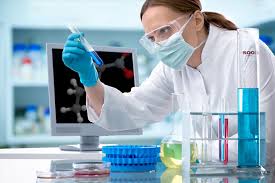Why Medical Research Matters in Everyday Healthcare

Why Medical Research Matters in Everyday Healthcare – You pop an Advil for your headache. A diabetic relative checks their glucose levels with a quick finger prick. A cancer survivor celebrates another year of life thanks to a breakthrough drug.
These moments feel ordinary—until you realize they were once impossible.
Behind every pill, vaccine, and life-saving treatment lies an untold story of relentless research, failed experiments, and unsung heroes who dedicated their lives to turning hope into healing.
Most of us never think about medical research—until we desperately need it.
But here’s the truth: Every medical privilege we have today was once a risky experiment. And the future of medicine depends on whether we recognize—and support—the invisible process that turns science into survival.
How a Medical Breakthrough is Born: The 4-Stage Journey From Lab to Life
Stage 1: The “Eureka” Moment—Where Breakthroughs Begin
It starts with a single curious mind.
A scientist notices something strange—a chemical reaction, an odd protein behavior, or an unexpected result in a petri dish.
-
2023 Example: AI decoded 200 million protein structures in months—a task that would’ve taken humans 1,000 years.
-
Brutal Reality: 95% of “promising” discoveries go nowhere. Most fail before they even reach human testing.
This stage is high-risk, high-reward—the birthplace of ideas that could change medicine forever.
Stage 2: The Lab Gauntlet—Where Most Drugs Die
If an idea survives initial discovery, it enters the crucible of lab testing.
-
9 out of 10 potential treatments fail here.
-
Modern Twist: Scientists now use “organs-on-chips”—microchips lined with human cells—to mimic biology better than animal testing.
-
Ethical Dilemma: Should AI replace animal trials? Or does that risk missing critical safety data?
This stage separates hype from hope—only the strongest candidates move forward.
Stage 3: Human Trials—The Ultimate Test of Trust
If a treatment passes lab tests, it faces the most critical hurdle: real human bodies.
-
Phase I: Is it safe? (20-100 healthy volunteers risk side effects for zero personal benefit.)
-
Phase II: Does it work? (100-500 patients test effectiveness.)
-
Phase III: Is it better than existing treatments? (1,000-5,000 patients in controlled studies.)
Shocking Bottleneck: 37% of cancer trials fail because not enough people volunteer.
Unsung Heroes: The healthy people who test drugs knowing they’ll never personally benefit.
Stage 4: The Marathon to Approval—Where Science Meets Bureaucracy
Even if a drug works, it must survive the grueling approval process.
-
FDA review takes 12 years on average.
-
Cost: $2.6 billion per approved drug—enough to buy 10 private jets.
-
Controversy: The “Right to Try” debate—should dying patients access experimental drugs before full approval?
This stage is where good intentions clash with hard science—and where bureaucracy can delay life-saving treatments.
Real-World Magic: How Research Already Saved Your Life (Without You Knowing)
1. Everyday Miracles You Take For Granted
-
Blood pressure meds? Born from 1940s snake venom research. Now, they prevent 1 in 5 heart attacks.
-
HIV treatment? In 1996, AIDS was a death sentence. Today, patients live near-normal lifespans.
2. The Silent Revolution in Your Doctor’s Office
-
Precision medicine? Your DNA now guides depression treatment.
-
Telemedicine? Developed for astronauts, now in your pocket.
-
Your Apple Watch? Uses ICU-tested algorithms to detect heart issues.
3. COVID’s Silver Lining: Science at Warp Speed
-
mRNA vaccines? 30 years of research led to a pandemic game-changer.
-
Lesser-known win: NIH’s ACTIV system tested 100+ treatments at once, accelerating breakthroughs.
Why Scientists Lose Sleep Over These 3 Threats to Future Cures
1. The Money Problem
-
Only 5% of global health budgets fund research.
-
Dangerous Incentive: Pharma makes more on erectile dysfunction than malaria drugs.
2. The Volunteer Crisis
-
80% of trials delay due to low participation.
-
Myth: Most healthy people think trials are “only for sick patients.”
3. The “Valley of Death”
-
17-year gap between discovery and real-world use.
-
Tragic Example: It took 40 years for doctors to accept handwashing saves lives.
How YOU Can Help Shape the Future of Medicine
For Everyone:
✅ Join a clinical trial (Search “clinical trials near me”—healthy volunteers needed too!)
✅ Donate to basic research (Not just disease charities—fund the next generation of cures.)
✅ Ask your doctor: “Is this treatment research-backed?”
For Professionals:
Simplify consent forms (Most require college-level reading—this excludes many patients.)
Push for open science (40% of studies hide behind paywalls—this slows progress.)
Support translational research (Bridging the gap between lab and bedside.)
For Leaders:
Fund high-risk projects (Like DARPA does for tech—medicine needs bold bets.)
Require research literacy in med schools (Doctors should understand how treatments are born.)
Build global trial networks (Rare diseases need international collaboration.)
The Bottom Line: This Isn’t Just Science—It’s Personal
That antibiotic that saved your child’s ear infection? Someone’s life work.
Your parent’s knee replacement? Decades of material science.
The cancer immunotherapy giving someone extra years? Being tested right now.
Medical research isn’t abstract—it’s the difference between:
✔ Living vs. surviving
✔ Treatment vs. cure
✔ Hope vs. hospice








